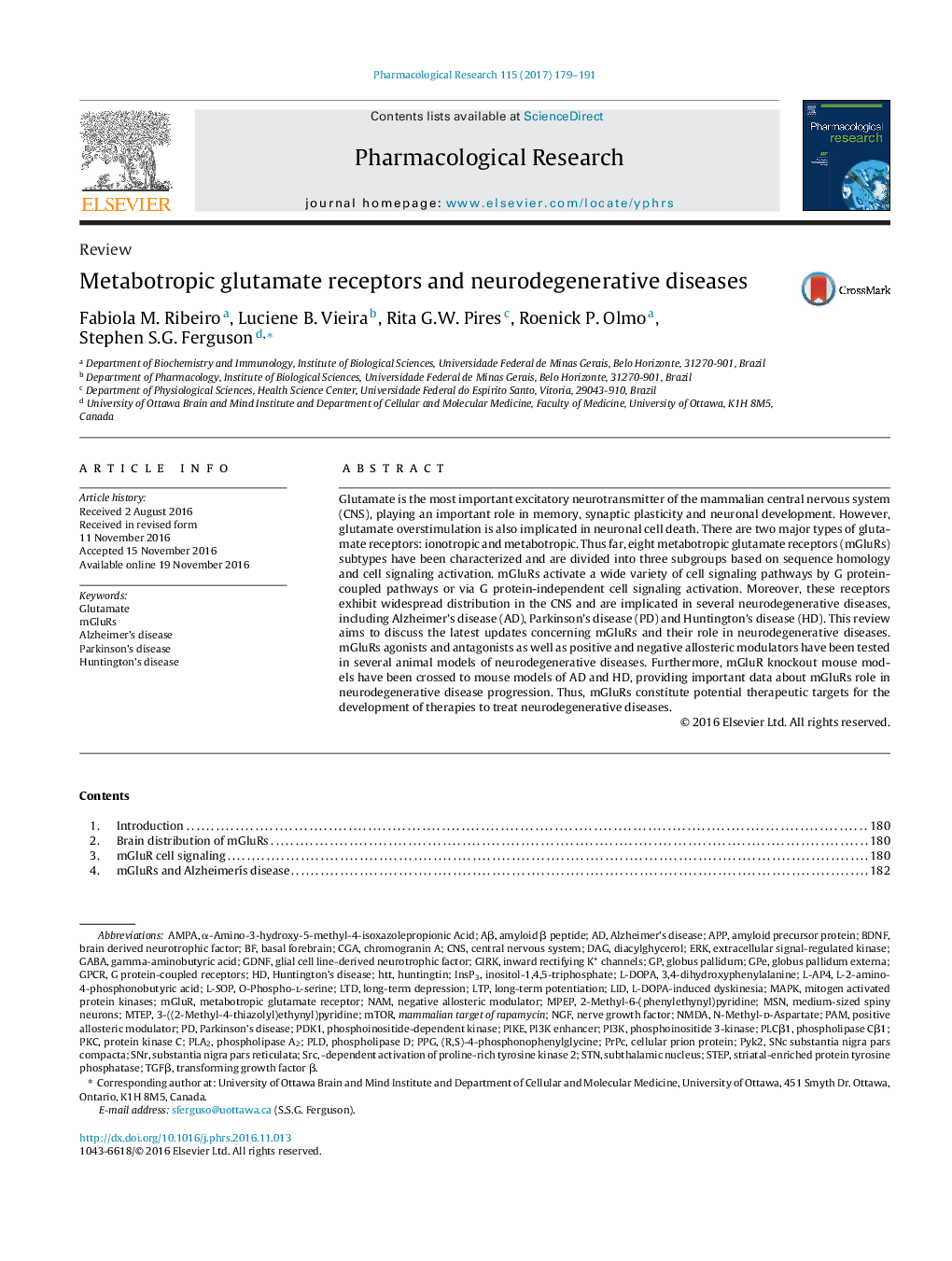| کد مقاله | کد نشریه | سال انتشار | مقاله انگلیسی | نسخه تمام متن |
|---|---|---|---|---|
| 5557538 | 1560826 | 2017 | 13 صفحه PDF | دانلود رایگان |
Glutamate is the most important excitatory neurotransmitter of the mammalian central nervous system (CNS), playing an important role in memory, synaptic plasticity and neuronal development. However, glutamate overstimulation is also implicated in neuronal cell death. There are two major types of glutamate receptors: ionotropic and metabotropic. Thus far, eight metabotropic glutamate receptors (mGluRs) subtypes have been characterized and are divided into three subgroups based on sequence homology and cell signaling activation. mGluRs activate a wide variety of cell signaling pathways by G protein-coupled pathways or via G protein-independent cell signaling activation. Moreover, these receptors exhibit widespread distribution in the CNS and are implicated in several neurodegenerative diseases, including Alzheimer's disease (AD), Parkinson's disease (PD) and Huntington's disease (HD). This review aims to discuss the latest updates concerning mGluRs and their role in neurodegenerative diseases. mGluRs agonists and antagonists as well as positive and negative allosteric modulators have been tested in several animal models of neurodegenerative diseases. Furthermore, mGluR knockout mouse models have been crossed to mouse models of AD and HD, providing important data about mGluRs role in neurodegenerative disease progression. Thus, mGluRs constitute potential therapeutic targets for the development of therapies to treat neurodegenerative diseases.
124
Journal: Pharmacological Research - Volume 115, January 2017, Pages 179-191
